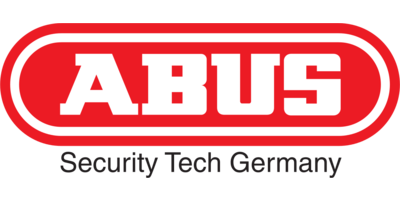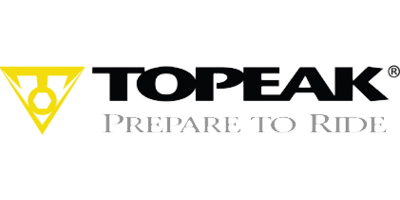Choosing the right bike
We have put together an informative guide to give you more confidence and knowledge to make the right purchase. If you are new to cycling and don't know your rear mech from your skewer, don't be afraid to ask, we were once in your shoes.SIZE AND FIT
How do I know if a bike will fit me?
Exactly – you don't! Not until you sit on one at least.
Here at Woodrups, we don't sell bikes by mail order or over the internet precisely for the reason that we feel in order to give the customer the best fit and adjustment on a bike, you simply need to sit on the bike! Everyone has differing anatomy and body dynamics and these need to be taken into account.
There is no substitute for seeing your machine in the flesh and being sure it fits you properly. This is the only way to know which cycle will perform best for what you want.
Main criteria is leg reach and arm reach as these are your limiting factors. The best way to check both are right is to sit on a cycle and ensure the reach isn't too long or short and tailor the saddle position, bar angle, stem height, length and rise etcto suit you best.
Different types of bike, for example a Mountain bike or Hybrid cycle, have different geometry and position which need to be taken into account when sizing a cycle.
Also, we understand as you become more accustomed to the bike you may desire slight adjustment in position for more comfort which is one of the reasons we provide a free service within the first 8 weeks of purchase to accommodate this.
Our staff are all regular cyclists from all genres of cycling. With a combined total of over 100 years experience in riding and working with bikes, we are well versed in how to make sure you get the right fit, adjustment and size from your cycle.
PURPOSE
There has never been so many cycles, parts and categories of cycles available as what there are today. It is important to get the correct type of machine for the purpose you intend to use it.
We can give more informative advice on suitability in store and you can be sure your bike is professionally assembled and working smoothly with our build check, sales check and 1st service check on every cycle. The following may help you decide. If you're not sure just say so - you are not the first and won't be the last!
Most machines fall into the following categories:
- Road bike
- Mountain bike
- Hybrid bike
- Childs bike
- BMX
- Folding bike
These are all very different bikes in terms of construction, use and geometry. There are many sub-classifications within each of these but these are all you need to know initially. We will describe each machine in more detail and identify the differences to help you narrow your choice more effectively.
It may seem overwhelming at first but it has never been better in terms of options and quality, you probably just need some guidance to help get the best one for you.
We can give lots of specific advice in-store without pressure sales on gearing, pedal types, fittings and compatibility etc.
The easiest way to approach choice is to determine what sort of purpose you want the bike for.
ROAD BIKE
These are built for riding solely on the road and are built primarily for speed. They are characterised by low hooked handlebars, skinny tyres and saddles. They are very lightweight, geared high and designed to achieve a low riding position to minimalise frontal area and reduce wind drag, the most limiting factor of riding at speed.
If you are looking at doing all your riding on the road, want fitness, possible competition and exhilarating speed then a road bike is the best choice.
A Road Bike is best suited for the following riding:
- If you wish to ride long distances regularly for fitness (e.g. 50miles plus)
- Road racing – massed start races, usually on a circuit over a set distance
- Cyclo-sportives – massed start recreational or charity challenge rides (such as London to Brighton) over testing climbs and distances with support and refreshment en route.
- Commuting over longer distances – 10miles plus, each way on roads
- Triathlon – For training and competing (easy to lower bars and adapt by fitting time trial bars), also a much cheaper but effective alternative to a more expensive dedicated time trial bike
MOUNTAIN BIKE
These are designed for riding rough terrain off road (off road is best described as any surface other than road). They are typically characterised by knobbly tyres and suspension forks. They have stronger frames, the lowest gearing for steep and slow terrain, suspension forks at the front and sometimes suspension at the rear.
A Mountain Bike is specifically designed for riding off road – there is a wide variety of off road terrain from sedate, flat man made cycle paths to steep and technical terrain (where a good degree of skill is required). This can include muddy trails, gravel, man made compacted gravel paths, towpaths, stream beds, bedrock to name a few!! Mountain Bikes are 'go everywhere' bikes.
Mountain Bikes are suited for:
- Off road riding – You know - gravel, muddy stuff!!
- Fun, exciting rides away from traffic over terrain from easy to difficult
- Anyone wanting a 'go anywhere' bike
- Cross country riding/fitness/social
- Mountain Bike Racing or off road Charity Challenge Events
- Anyone who likes to get dirty and have a lot of fun doing it
Mountain Bikes can be used on the road but aren't as efficient as other types of cycle for this, although they can be adapted more for this type of use. Better quality Mountain bikes can be used for tame jumps (where both wheels leave the ground) and drop offs (riding off a trail ledge) although there are other types of Mountain Bikes with longer suspension designed for riding more specific types of terrain like these.
Specialized-Enduro-2017-1-1140x631.jpgHYBRID BIKE
These are designed for both road and off road use, with a more natural, upright position. They can easily switch from riding one type of terrain to the other but aren't as effective as a road bike on the road or a mountain bike off road. They are versatile, relatively inexpensive and suit many beginners.
Hybrid bikes are ideal if you want to:
- Cycle shorter distances (i.e. mostly <10miles and up to 30 miles) in urban areas and purpose built cycle paths
- Switch regularly between road and off road cycle paths such as canal towpaths or disused railway paths
- Commute short distances (usually <10miles each way) to work
- Have a versatile bike, capable of fitting panniers, racks and mudguards and travelling over short steep hills and long flat stretches.
- Use a comfortable cycle for fitness and recreation
- Use a bike with a more natural, upright position (similar to the 'sit up and beg' style) which is more comfortable for more sedate riding and fitness.
CHILDREN'S CYCLE
Children's bikes are measured by wheel diameter not frame size, typically in 2inch increments from 12 ? inch to 24 inch wheels. The determining factor is the age at which children can confidently mount and dismount a cycle with minimal help. The smallest ones have stabilisers to help with this, which are removable if desired.
As children grow at different rates it is best to get the right size cycle by sitting them on a bike. There is no 'right size bike for a certain age'. We can best advise on this and on type, as there are a large selection of children's bikes from 'theme bikes' (such as Peppa Pig or Spiderman) to children's BMX to children's mountain bikes. If a cycle is intended as a surprise (as invariably it is!) there are ways we can help –ask in store. Remember your first bike?
Children's bikes are best suited for:
- Children! NO! It's still too small for you!
BMX
BMX (Bicycle Motor Cross) are a specific style of bike with 'braced' handlebars, a single gear and 20inch wheels. They invariably have trick pegs for landing on ramps and performing 'grinds'. They are urban play bikes for doing tricks on. They can be used for short rides, ramps, verts, grinding bars and skate parks.
They also make great play bikes for children from roughly age 10 onwards!
You need a BMX because:
- You want an urban play bike for skate parks, tricks, ramps and jumps
- Your teenager wants a cool bike to play with mates on and get about on with the option of progressing to tricks
- You want a classy street style bike for cruising short distances to extend your personality!
FOLDING BIKES
These are 'transporter' cycles designed for short distance urban trips (typically a few miles) with the versatility of folding into a compact size (think large cupboard size) for taking on trains or into offices. They have 'giraffe' seatposts and handlebar stems, small (usually 20inch) wheels and can come in single gear or geared options. They are quick to fold down (usually take about 20-30 seconds after a few attempts!) and compact meaning you can fit them under a desk at work or on a train without fuss.
Folding bikes are ideal for:
- Short urban journeys, such as commutes
- Linking short destinations either side of a train journey
- Useful transportation for boaters or caravaners
- Anyone requiring versatility of cycle transportation without space to store a regular cycle



















